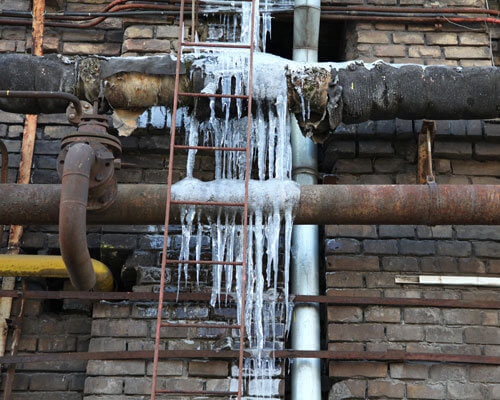Avoiding Pipes from Freezing: Top Tips
Avoiding Pipes from Freezing: Top Tips
Blog Article
This post down below relating to 6 Ways to Prevent Frozen Pipes is quite fascinating. Check it out yourself and figure out what you think of it.

Cold weather can ruin your pipes, particularly by freezing pipelines. Below's exactly how to prevent it from occurring and what to do if it does.
Introduction
As temperatures decline, the risk of frozen pipelines rises, potentially leading to expensive repair services and water damages. Understanding exactly how to stop frozen pipes is vital for property owners in cold environments.
Prevention Tips
Insulating susceptible pipes
Cover pipes in insulation sleeves or use warm tape to shield them from freezing temperature levels. Focus on pipelines in unheated or exterior locations of the home.
Heating techniques
Keep interior areas effectively heated, particularly areas with plumbing. Open cupboard doors to allow warm air to distribute around pipes under sinks.
How to recognize icy pipelines
Try to find reduced water flow from taps, unusual odors or sounds from pipelines, and noticeable frost on exposed pipelines.
Long-Term Solutions
Architectural adjustments
Consider rerouting pipes away from exterior wall surfaces or unheated areas. Include added insulation to attics, cellars, and crawl spaces.
Updating insulation
Invest in high-quality insulation for pipelines, attics, and wall surfaces. Appropriate insulation assists keep consistent temperatures and reduces the threat of frozen pipes.
Protecting Outside Pipes
Garden hose pipes and outside faucets
Detach and drain yard hose pipes before wintertime. Install frost-proof spigots or cover outside taps with shielded caps.
Comprehending Frozen Pipes
What triggers pipelines to freeze?
Pipelines freeze when revealed to temperatures listed below 32 ° F (0 ° C) for expanded periods. As water inside the pipes freezes, it increases, taxing the pipeline wall surfaces and possibly causing them to burst.
Risks and damages
Icy pipelines can result in water system interruptions, property damages, and pricey repairs. Ruptured pipelines can flood homes and cause considerable architectural damages.
Signs of Frozen Pipes
Recognizing frozen pipes early can stop them from rupturing.
What to Do If Your Pipelines Freeze
Immediate actions to take
If you think icy pipes, maintain faucets open up to eliminate pressure as the ice thaws. Make use of a hairdryer or towels soaked in warm water to thaw pipes gradually.
Conclusion
Avoiding icy pipelines needs aggressive measures and quick actions. By understanding the causes, indications, and safety nets, home owners can protect their plumbing during winter.
5 Ways to Prevent Frozen Pipes
Drain Outdoor Faucets and Disconnect Hoses
First, close the shut-off valve that controls the flow of water in the pipe to your outdoor faucet. Then, head outside to disconnect and drain your hose and open the outdoor faucet to allow the water to completely drain out of the line. Turn off the faucet when done. Finally, head back to the shut-off valve and drain the remaining water inside the pipe into a bucket or container. Additionally, if you have a home irrigation system, you should consider hiring an expert to clear the system of water each year.
Insulate Pipes
One of the best and most cost-effective methods for preventing frozen water pipes is to wrap your pipes with insulation. This is especially important for areas in your home that aren’t exposed to heat, such as an attic. We suggest using foam sleeves, which can typically be found at your local hardware store.
Keep Heat Running at 65
Your pipes are located inside your walls, and the temperature there is much colder than the rest of the house. To prevent your pipes from freezing, The Insurance Information Institute suggests that you keep your home heated to at least 65 degrees, even when traveling. You may want to invest in smart devices that can keep an eye on the temperature in your home while you’re away.
Leave Water Dripping
Moving water — even a small trickle — can prevent ice from forming inside your pipes. When freezing temps are imminent, start a drip of water from all faucets that serve exposed pipes. Leaving a few faucets running will also help relieve pressure inside the pipes and help prevent a rupture if the water inside freezes.
Open Cupboard Doors
Warm your kitchen and bathroom pipes by opening cupboards and vanities. You should also leave your interior doors ajar to help warm air circulate evenly throughout your home.

Do you appreciate reading up on How to prepare your home plumbing for winter weather? Try to leave a remark directly below. We'd be happy to listen to your feelings about this blog post. We hope that you come back again in the near future. Sharing is nice. One never knows, you may just be helping someone out. Thanks for your time. Don't hesitate to check up our site back soon.
Show Details Report this page